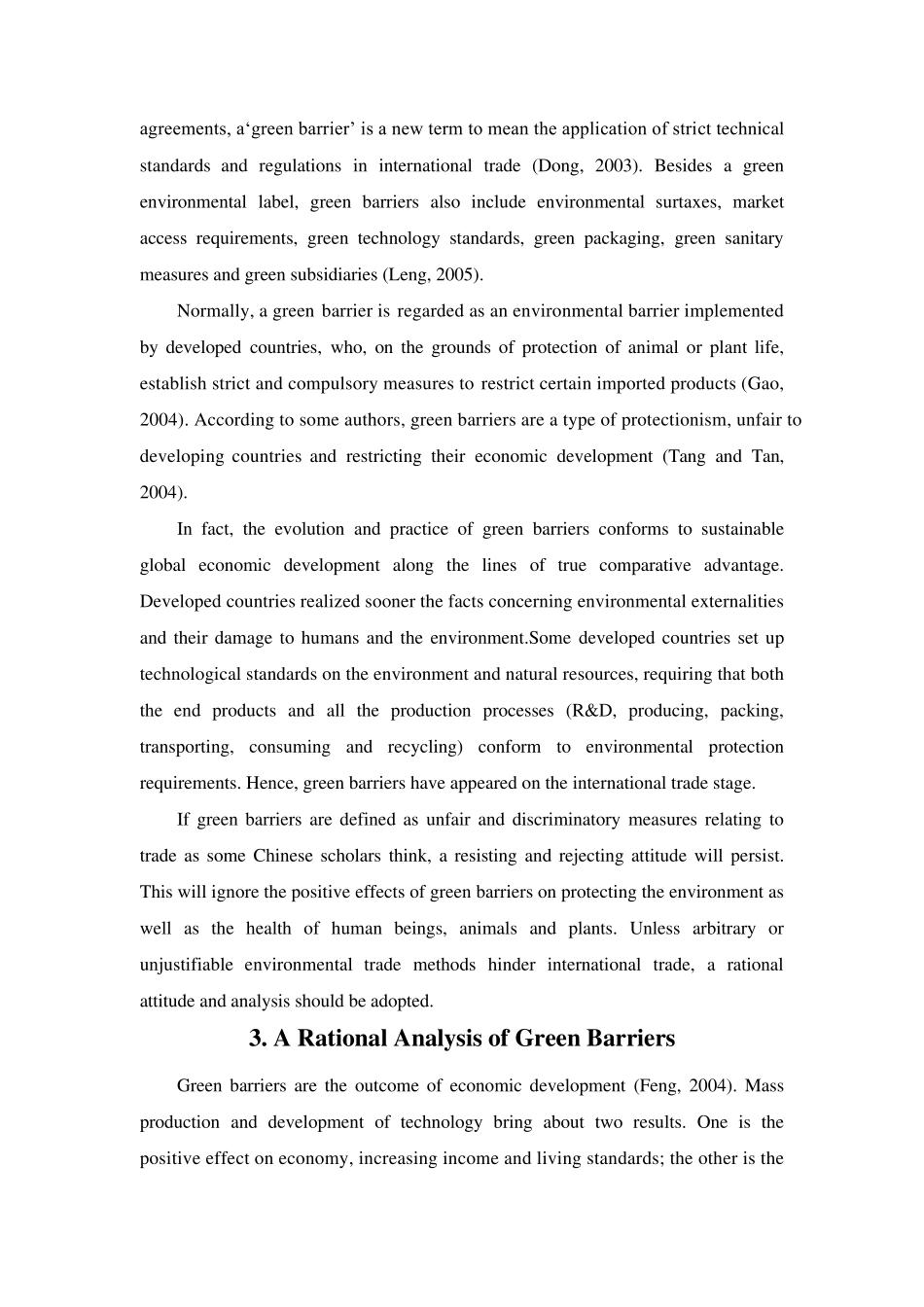Appendix: Green Barriers from the Standpoint of Sustainable Development Abstract: Green barriers are one kind of non-tariff barrier (NTB). This paper points out that green barriers evolved from sustainable development theory and environmental protection, but are compatible with true comparative advantage. The best way to surmount green barriers for Chinese enterprises is to implement circular production processes and clean production techniques. Key Words: Green barriers, sustainable development, ecology environment, circular economy, life-cycle analysis. 1. Introduction Since the opening up and economic reform of China, its foreign trade volume has risen continuously from US$20.6 billion in 1978 to US$1,422 billion in 2005. The sum of exports plus imports as a fraction of GDP is 65.8%, the share of exports is 36.2%, the share of imports is 29.6% in 2006 in China (The National Bureau of Statistics of China, 2006). Exports mainly concentrate on labor intensive and resource intensive industries: labor intensive products accounting for 40% of total manufacturing exports and resource intensive including rubber and metal products accounting for 20%. This export pattern depletes resources and causes high emissions and high pollution, a serious environmental problem in China (Gu, 2005). In addition,besides agricultural products, the exportation of mechanical and electrical products is facing increasing technical barriers such as noise, pollution, safety standards, energy saving, and recycling requirements. Every year,about US$8 billion of export products are affected by foreign green labeling and trademarks and US$24 billion of products are indirectly influenced since packing methods do not satisfy the environmental protection...


